





Polydactylia
The polydactylia is an inborn pathology of development of fingers which is expressed in increase in their quantity. It is more often observed on hands, but can affect also toes, or at the same time upper and lower extremities.
 As a rule, this anatomic defect is inherited as a dominant character at a polydactylia from one of parents. It is not life-threatening, but can become the reason of a psychological injury, break functions of extremities, and also slow down physical development and limit choice of profession in the future.
As a rule, this anatomic defect is inherited as a dominant character at a polydactylia from one of parents. It is not life-threatening, but can become the reason of a psychological injury, break functions of extremities, and also slow down physical development and limit choice of profession in the future.
Statistically, the polydactylia meets identical frequency at boys and girls. According to various data, it is noted at one of 660-3300 babies and can be combined with other inherited disorders of a musculoskeletal system, such as syndactylia, brachydactyly and dysplasia of joints.
Polydactylia reasons
The etiology of development of a polydactylia is insufficiently studied, but genetic predisposition is considered the main reason. The probability of transfer of anomaly by inheritance makes 50% as the dominant character of a polydactylia is characterized by low degree of penetrance. Thus, at the carrier of a gene also the healthy child can be born.
According to some versions, pathology can arise at an embryo on 5-8 week of development because of uneven increase in quantity of mesodermal cells. Besides, sometimes it is only one of symptoms of serious gene or chromosomal violations. The medicine knows about 120 syndromes which can be followed by a polydactylia, among which it is possible to call:
- Rubenstein-Taybi syndrome;
- Carpenter's syndrome;
- Syndrome Smith-Lemli-Opitz;
- Syndrome of Laurens-Mun-Biyedl;
- Hondroektodermalny dysplasia;
- Trisomy 13;
- Thoracic dystrophy with asphyxia.
Often it is not possible to establish an exact origin of additional fingers.
Classification of a polydactylia
The polydactylia is classified by localization and type of doubling. Depending on what fingers are duplicated, distinguish three types of anomaly:
- Preaksialny (radial) – a thumb;
- Central – index, average and anonymous;
- Post-axial (ulnarny) – a little finger.
Additional fingers as on hands, and standing, can form in the different ways on which their qualitative characteristics and functionality depend. Depending on what type doubling took place, they can represent the following educations:
- Rudiment. Consists of soft tissues, without bones. Keeps on a skin leg. It is nonfunctional;
- The doubled main finger. It is formed as a result of doubling of the corresponding metacarpal or plusnevy bone. It is almost always underdeveloped and has smaller number of phalanxes;
- Full-fledged finger. Has the normal sizes and the form.
At a polydactylia in the place of defeat deformation of bones and joints which is capable to progress and lead to secondary changes of the bone and joint device over time is quite often observed.
Diagnosis of pathology
Diagnosis of a polydactylia is carried out by means of clinical, genetic, radiological, biomechanical and other techniques of a research. Clinical examination of the child is performed by the pediatrician, the orthopedist and the geneticist to reveal functional and anatomic disturbances of development, and also to establish a polydactylia mode of inheritance. Surely the X-ray analysis of the struck brush or foot becomes to estimate a condition joint and the ossa. In need of survey of cartilaginous structures and soft tissues, the magnetic and resonant tomography is carried out. Additional methods, such as a stabilografiya and an electromyography, allow to add the received results.
The genetic analysis is directed to drawing up the forecast of probability of the birth at this couple of the child with anatomic anomaly. As the autosomal and dominant mode of inheritance of a polydactylia is most characteristic, for a course of a disease it is enough that the mutant allele was transferred from one of parents.
If the shestipalost represents a symptom of a chromosomal or genetic deviation, careful prenatal diagnosis which includes amniocentesis and a biopsy of chorion, and also ultrasonography is necessary. At the isolated polydactylia pregnancy is recommended to keep, and at chromosomal disturbances – to interrupt.
Treatment of a polydactylia
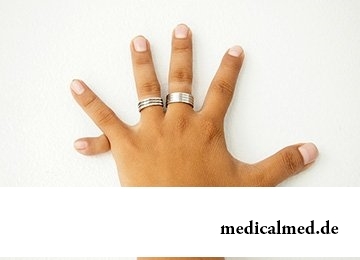 Treatment of a polydactylia is carried out by exclusively surgical way. If additional fingers consist of soft tissues, then delete them in the first months after the birth. In other cases resort to an operative measure not earlier, than in a year. It is necessary to study a condition of the main fingers that cannot be made at the newborn.
Treatment of a polydactylia is carried out by exclusively surgical way. If additional fingers consist of soft tissues, then delete them in the first months after the birth. In other cases resort to an operative measure not earlier, than in a year. It is necessary to study a condition of the main fingers that cannot be made at the newborn.
Clinical data demonstrate that after usual removal of additional phalanxes repeated deformation develops in 70% of cases. Therefore during operation elimination of additional phalanxes can be combined with correction of deformation of the main fingers or with their recovery by means of remote fabrics. Duration of the recovery period also depends on it. Sometimes for normalization of functions of brushes or feet several years can be required.
The isolated polydactylia will respond to treatment best of all at early age. If this pathology is a consequence of a chromosomal or gene syndrome, then the forecast depends on weight of a basic disease.
Prevention of a polydactylia consists in carrying out genetic consultations during pregnancy planning, and afterwards – in implementation of prenatal diagnosis.
Stomatologists appeared relatively recently. In the 19th century to pull out painful teeth belonged to duties of the ordinary hairdresser.
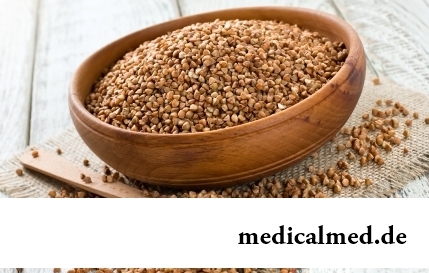
History of cultivation of a buckwheat contains more than five thousand years. Grain which is received from this plant is used for пригото...
Section: Articles about health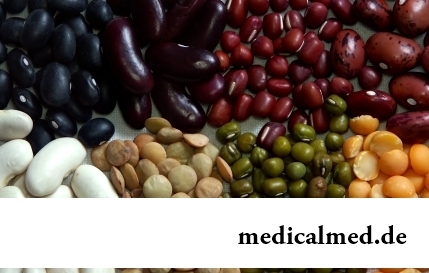
Ability of an organism to resist to adverse environmental factors (to impact of temperature drops, humidity and pressure, to the attacks of causative organisms, etc.) directly depends on what the person eats. Business here not only in, that C...
Section: Articles about health
Season of activity of viral infections in the heat. Everyone can get sick, but probability of this unpleasant event it is possible and it is necessary to minimize. There is a number of rules, following to which will help or to avoid absolutely infection with flu or a SARS, or to have an illness benign and without essential complications. About ways of prevention of seasonal infections the speech in this article will also go....
Section: Articles about health
All know that self-treatment is dangerous. However absolutely it is almost impossible to do without it. Rate of modern life not on...
Section: Articles about health
Smoking not only exerts a negative impact on the state of health of the consumer of tobacco products, but is an air polluter the substances potentially dangerous to people around. In recent years significantly the number of people, стремящ increased...
Section: Articles about health
Olive oil – the product capable to make a powerful contribution to health of the person if it includes it in the diet. The rich vitamin composition of oil does it by a product number one from many diseases including from deadly. Only two tablespoons of oil from olives in day prevent emergence of diseases of vessels and heart, cancer, problems with digestion, presenilation, a depression and many other illnesses which treatment would demand a lot of time and forces. Let's consider on...
Section: Articles about health
The phenomenon of the panic attack is known long ago, but the reasons of its emergence still are up to the end not found out. It is established that more than 30%...
Section: Articles about health
Partial and the more so full loss of hearing significantly reduces quality of life. Difficulties with communication lead to loneliness and isolation. The person who badly hears experiences difficulties with social and professional implementation, quite often has problems in...
Section: Articles about health
A lot of things depend on a condition of a backbone in a human body, a backbone - not only a support for a body, it also a receptacle for a spinal cord, that is why malfunctions with a backbone are so dangerous. To treat rachis diseases very difficult and long, it is much simpler and more correct not to bring to a disease. Conforming to the rules provided in this article it is possible to avoid the majority of the problems connected with a backbone including those which are considered to be age, but a cat...
Section: Articles about health
To look healthy and means well-groomed not only to be pleasant to people around, but also to feel strong, sure and taken place. To Spa...
Section: Articles about health
The technique of acupuncture (acupuncture) is used in the medical purposes more than three and a half millennia. It is eurysynusic and recognized as official medicine in the majority of the developed countries of the world. Influence by fine needles on so-called points...
Section: Articles about health
The cosmetics intended for improvement of a condition of skin, nails and hair are used by each woman. Expenses on regular acquisition of the fashionable widely advertized products of well-known companies for many become very notable and significantly burden the family budget. Meanwhile, there is a number of inexpensive pharmaceutical drugs which can quite be applied in the cosmetic purposes. At the same time the effect of their use is often more noticeable, than result of use of the most expensive...
Section: Articles about health
The metabolism at each person proceeds in own way. However dependence between the speed of this process and disposal from superfluous in...
Section: Articles about health
Dogrose – one of the most widespread adornment and medicinal plants growing practically in all territory of our country. To most of Russians it is a beautiful bush it is known, first of all, as a source of fruits, extremely vitamin-rich....
Section: Articles about health
Traveling all over the world, many try to try the most exotic dishes of national cuisines. There is even a so-called gastronomic tourism which, according to gourmets, not only allows to receive new feelings, but also is capable to show life of other people from absolutely unexpected side....
Section: Articles about health
The state of health of the person depends on many factors. One of the most important is the constant but which is not exhausting, motive...
Section: Articles about health
It is impossible to imagine human life in which there would be no plants. Practically in each apartment and any production room there are window plants, millions of people with pleasure are engaged in gardening and truck farming, many citizens пр...
Section: Articles about health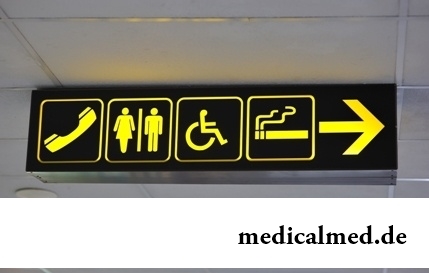
The saying "the rich do not know how the other half lives" is known to all. In a broad sense it is that we can not always understand the person whose features of a state are unknown to us. If with physiological characters of diseases the situation is more or less clearly (having noticed them, we realize that to the person nezdorovitsya), then with symptoms of the illnesses affecting the mental sphere everything is much more difficult. Not absolutely usual behavior is quite often perceived surrounding as a ridiculous eccentricity, or that much ху...
Section: Articles about health
Bulimia and anorexia, are heavy deviations of a feeding behavior, become a cause of death of patients much more often than all others...
Section: Articles about health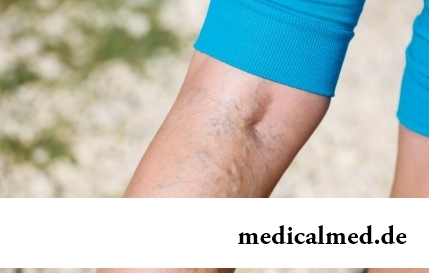
The varicosity has familiarly many, statistically, this disease more than a half of all adult population. As a rule, the varicosis affects preferential superficial vessels, and is shown by characteristic cosmetic defects. Guo...
Section: Articles about health
Use of medicinal plants in therapy is urgent today, more than ever. The drugs made of curative herbs cannot replace completely modern synthetic drugs, but their use becomes frequent serious help in simplification of a course of many illnesses and improvement of quality of life of chronic patients....
Section: Articles about health
The business lady, the become mother, it is necessary to solve an array of problems. But of them is main: how to combine the beloved child and work?...
Section: Slideshow
The main role in development of a peptic ulcer of a stomach and duodenum the bacterium Helikobakter plays pilor. Activity and the strengthened reproduction of this microorganism lead to weakening of protection of mucous membranes and their erosive damage. Manifestations not...
Section: Articles about health
Any person who faced a disease knows that treatment costs expensive. It belongs also to consultations of qualified specialists, and to the diagnostic procedures which are not included in the list of obligatory medical services. The question of cost of medicines is not so unambiguous: almost each drug is produced several producers at once, and the price of medicine can differ many times. In such situation there is a sense to understand in what differ from each other original environments...
Section: Articles about health
Diseases of joints often begin imperceptibly for the person. The first stages of destruction of the cartilaginous tissue providing soft and свободн...
Section: Articles about health
Several decades ago the basil (the district khan, реан, Reagan) was considered as a part of the Caucasian or east cuisine, but today it strongly took the place on tables of Russians. Greens of this plant possess a strong, pleasant smell and specific fresh taste, because of to...
Section: Articles about health
Practice of use of table salt in the therapeutic purposes contains not one century. Applications which do by means of the fabric impregnated with saline solution are considered especially effective. They have antibacterial and antiinflammatory effect, help to heal wounds, exempt fabrics from excess liquid. Hypertonic salt solution of potassium chloride is applied outwardly at many morbid conditions. Let's tell about the most known of them....
Section: Articles about health
